Ankylosing spondylitis is an inflammatory disorder that could eventually cause the fusion of some of the spine's vertebrae. This fusing makes the spine less flexible, which could result in a hunched posture. If ribs are affected, it may be even difficult for a person to breathe.
Lower back and hip discomfort and stiffness are the first signs and symptoms of ankylosing spondylitis. Fatigue and neck aches are also frequent. Strong links exist between ankylosing spondylitis and HLA-B27.
As per Ayurveda, this disorder is mainly due to an imbalance of Vata Dosha. It falls under the broader category of ‘Ama Vata.’
Yoga is derived from the Sanskrit word "Yuj," which means "to combine or integrate." Yoga is all about bringing your body, mind, and breath into balance.
Yoga Asanas for Ankylosing Spondylitis
Following is the list of yoga asanas for ankylosing spondylitis which will help in finding relief from the pain and discomfort from all the symptoms that come along with it.
Tadasana (Mountain pose):
Tadasana serves as the starting point for all subsequent positions. Tada means "mountain" and asana indicates "position" in Sanskrit. Hence, "Mountain Pose" was named.
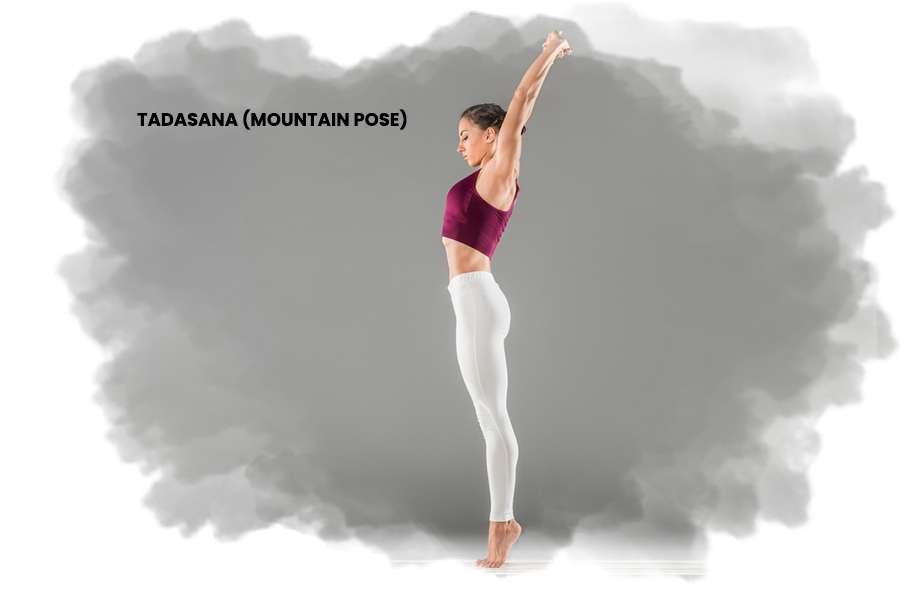
It is the perfect pose for rounded backs and weak back muscles since it can assist the body get back to its natural alignment. This asana can help children grow taller and is frequently recommended for kids. Additionally, this pose might aid with posture. This is the best yoga for ankylosing spondylitis. Try this pose for effective results.
Benefits of Tadasana:
Let's examine the advantages of performing this asana.
- Improves posture
- May help in gaining height
- Improve mental awareness
- Improves lung capacity
- Promotes weight loss
- Increases energy
Baddha Konasana (Butterfly Pose):
The Butterfly pose is also known as Titli asana or Baddha Konasana. This asana can decrease tension in the back as well as gives relaxation to the body and mind.
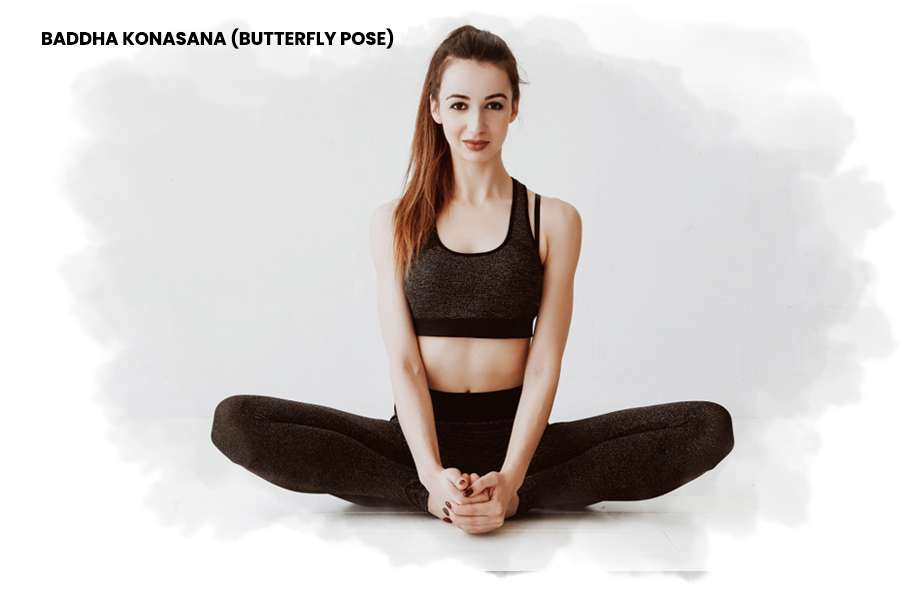
Butterfly pose or Baddha Konasana is the yoga position in which the lower and upper back portions of the body get stretched. The Badha Konasana or Titli Asana can help open hip joint muscles and tone the lower part of the body.
Benefits of Baddha Konasana:
- It increases the flexibility of the spine.
- It can be helpful against high blood pressure.
- It can help to tone the lower body.
- It can relieve physical and mental stress.
- It improves digestion and relieves constipation.
- It helps in relieving tiredness and lowers the pain in the legs and knees.
Marjariasana (Cat Stretch):
One of the most fundamental poses in various schools of yoga, marjaryasana is a core asana. Sanskrit marjari, which means "cat," and asana, which means "position," are the origins of the word.
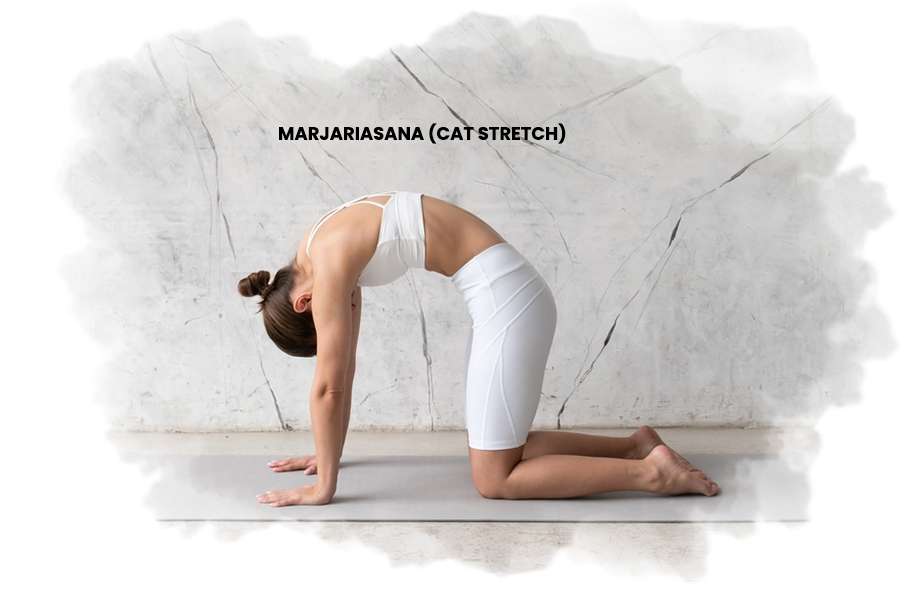
As the back rounds from a hands-and-knees tabletop position, the core muscles are drawn inward toward the spine. The head should slightly lean downward.
In English, marjaryasana is also known as the cat position. This is another pose that is considered as best yoga for ankylosing spondylitis.
Benefits of Marjariasana:
The benefits of this pose are:
- It enables the flexibility of the spine
- It strengthens the shoulders and wrists
- It aids in digestion by massaging the digestive system
- It tones the abdominal muscles
- It improves digestion
- It calms the mind and increases the blood flow circulation
Adho mukha svanasana (Downward Facing Dog):
Downward-facing dog pose, also known as adho mukha svanasana, looks like a dog bowing forward.

The yoga position known as Adho Mukha Svanasana, or "Downward Facing Dog Pose," gets its name from the way the body appears to be positioned as the dog (svana) stretches and unwinds while burying its face (mukha) toward the shoulders.
Adho in Sanskrit means "down," mukha "face," svana "dog," and asana "position." In this position, the body assumes the shape of a dog (Svana), relaxing and stretching while tucking its muzzle (Mukha) under its shoulders (Adho). It works well as a starting, transitional, resting, and strengthening pose thanks to its versatility.
Benefits of Adho mukha svanasana
- It strengthens the entire body, including the arms, shoulders, abdomen, legs, and upper body.
- It also stretches the spine, hamstrings, calves, ankles, and calves.
- It helps in soothing the psyche.
- It stimulates the flow of blood.
Malasana (Squat Pose):
Malasna stands for the Sanskrit name mala which means excrement and asana means position. As it resembles the stance used in ancient India to expel waste, this is where the name of the pose truly originates.

Practicing malasana opens the hips, relaxes the lower back, and activates the calves and glutes muscles. It also helps boost metabolism and improves digestion.
Benefits of Malasana:
- It increases the overall back’s flexibility and strength.
- It strengthens the arms and shoulders.
- It strengthens the muscles and nerves, especially those in the shoulders and neck.
- It promotes digestion and massages as well as tones abdominal organs.
Hindolasana (Baby Cradle pose):
This asana stands for the Sanskrit word Hindola which means swinging cradle and asana means position. This asana is one of the hip-opener asanas. This asana is of great help to women of all ages.

Benefits of Hindolasana:
- It also stretches the muscles of the buttocks.
- It requires the lower body to get relief from stiffness and tension. Therefore, lower back pain also it can be done to get relief.
- It eliminates the pain of ankylosing spondylosis and strengthens the muscles.
- The movements of the lower body release tension and there is flexibility in the muscles of the hips, knees, thighs, and calves.
- The movements of both sides while performing Hindolasana stretch the spine and enhance its function.
- The Hindolasana pose requires your lower body to get relief from stiffness and release tension. Therefore, it can be practiced even with severe back pain as this asana is safe for the back.
Balasana (Child’s pose):
The yoga stance known as Balasana is derived from the Sanskrit words Bala and asana, which mean "infant" and "pose," respectively.

The name "balasana" relates to the fundamental fetal position and the potential childlike vulnerabilities that may come from it. Many people even think that striking this stance can help them rekindle their primordial recollections of their time in the womb.
While lowering one's forehead to the ground can frequently be interpreted as weakness or surrender.
Benefits of Balasana:
- It relieves stress in the chest, shoulders, and back.
- It stretches and lengthens the spine and maintains the flexibility of the body's internal organs.
- It gently stretches the hips, thighs, and ankles while relieving neck and lower back pain when done with the head and torso supported.
- Stretching the knee's muscles, tendons, and ligaments improves circulation throughout the body.
- It promotes deep, consistent breathing.
Trikonasana (Triangle Pose):
Trikonasana is known as a triangle pose. The name trikonasana comes from the Sanskrit words trikona which means triangle and asana means posture. It helps in Stretching hips, back muscles, chest, and shoulders.
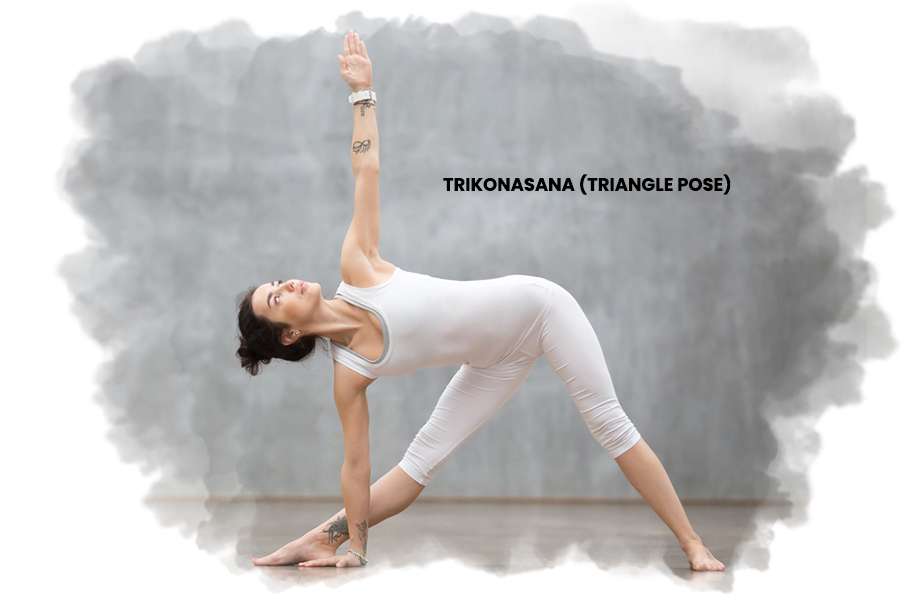
Benefits of Trikonasana:
- It stretches the spine as well as gives Strength to the thighs, buttocks, and calves.
- It stimulates the spinal nerves and improves the flexibility of the spine and correct alignment of the shoulders.
- It relieves backache, indigestion, acidity, and flatulence.
- It reduces stiffness in the neck, shoulders, and knees, strengthens the ankles, and tones the ligaments of the arms and legs.
Suryanamaskar (With mild Stretch):
‘Surya Namaskar’is also known as the sun salutation in English is an exercise it strengthens your back and your muscles, ligaments, joints, and the skeletal system. The movements of this asana help improve the flexibility of the spine.

Benefits of Suryanamaskar:
- It hampers a better mind and body balance, and good posture, opens the heart chakra, helps digestion, stretches the muscles, and relaxes the mind and soul.
- This asana is good for people who have fatigue, backache, and anxiety.
- It tones the arms, legs, and wrists. Additionally, it strengthens the back and the spinal muscles.
- It helps in reducing shoulder and neck pressure by releasing the tension in it.
- It has several benefits like calming the nerves as well as relieving stress to boost blood circulation.
Makarasana:
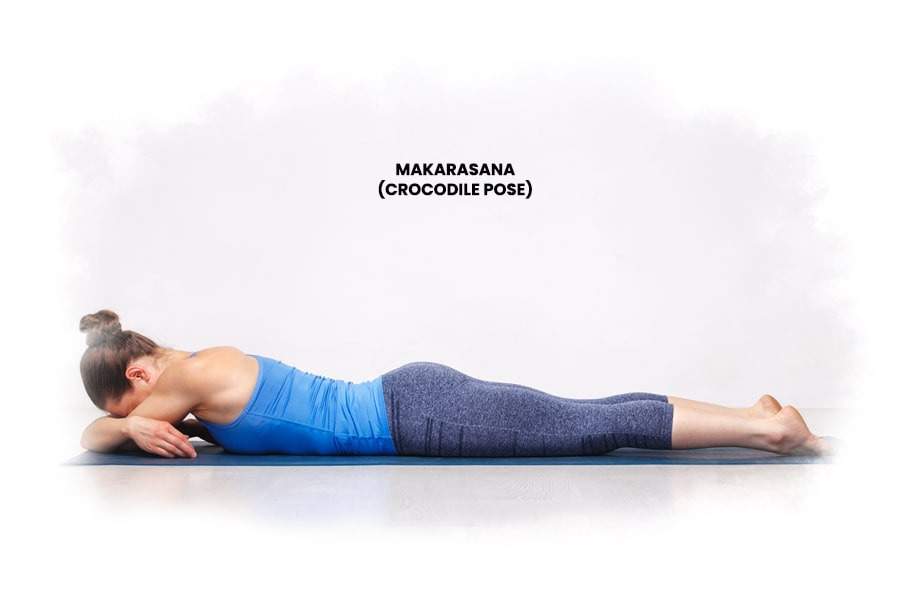
Makarasana, also known as crocodile pose, is a combination of two sanskrit words i.e. Makara + Asana (pose). It is a well known asana for its relaxing and restorative effects. It reduces stress and tension and is often practiced as a resting pose. It is specifically beneficial in gently stretching the back of the body and aids in relieving back pain.
These asanas will help you a lot in providing relief from all the symptoms related to ankylosing spondylitis. Just make sure to perform them as per your condition and if you need other assistance we are here to help you!
Benefits of Makarasana:
- This pose helps to improve spinal alignment and posture.
- It helps in relaxing the muscles of the lower back. Thus, providing relief from back pain and discomfort.
- It opens the chest and aids in expansion of lungs and sound breathing.
- It lowers the blood pressure and is beneficial for people with cardiac issues.
- It helps reduce stress and anxiety.
- A gentle pressure on the abdomen energizes digestive organs aiding better digestion.
- Being a beginner friendly pose it is accessible to individuals of all fitness levels
- It promotes mindfulness and inner peace.
